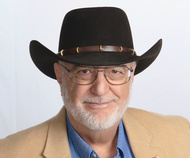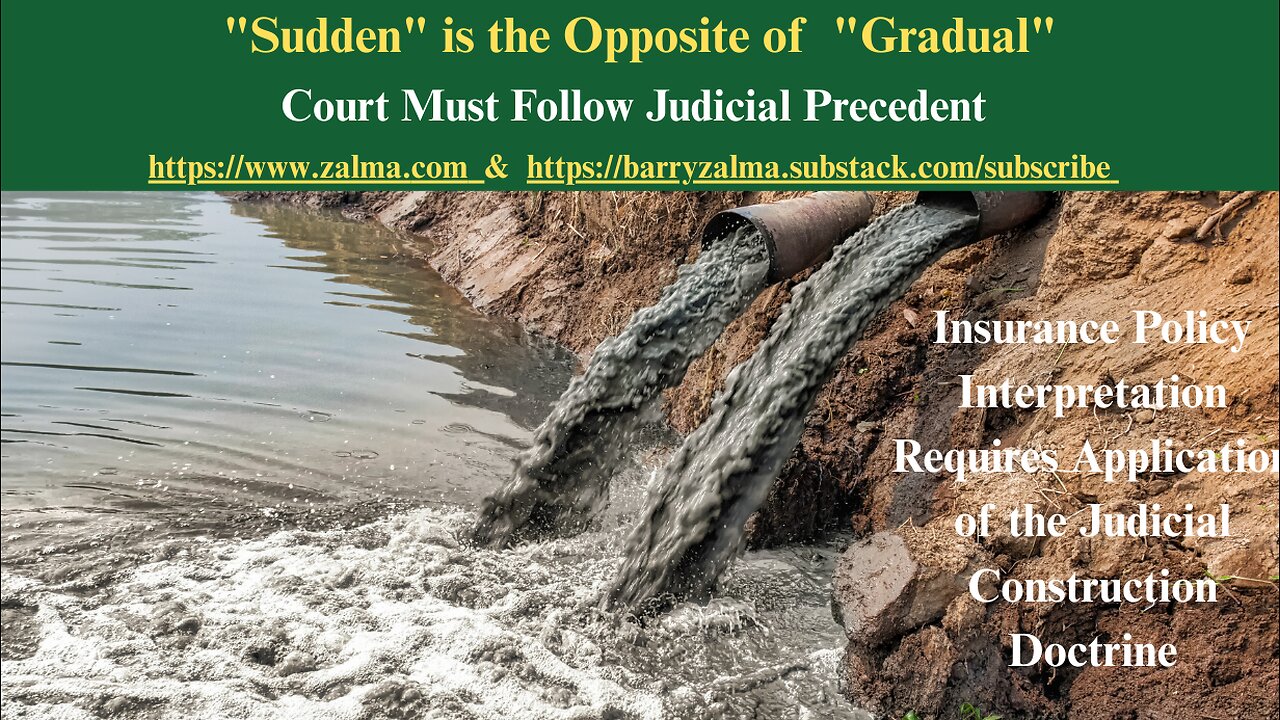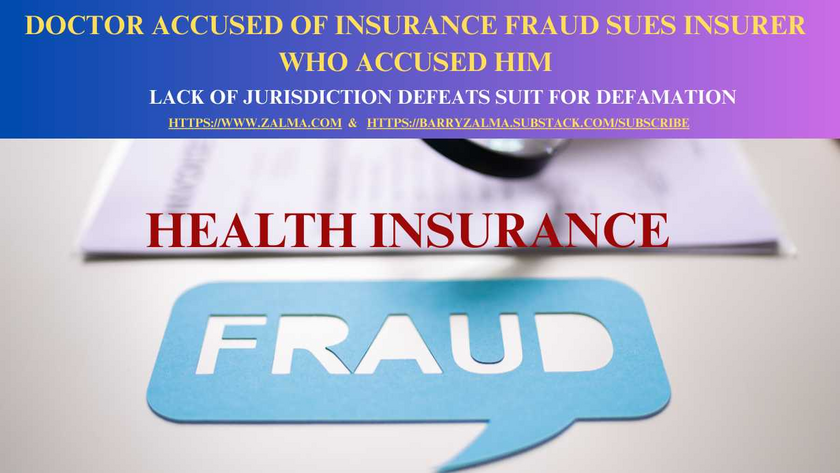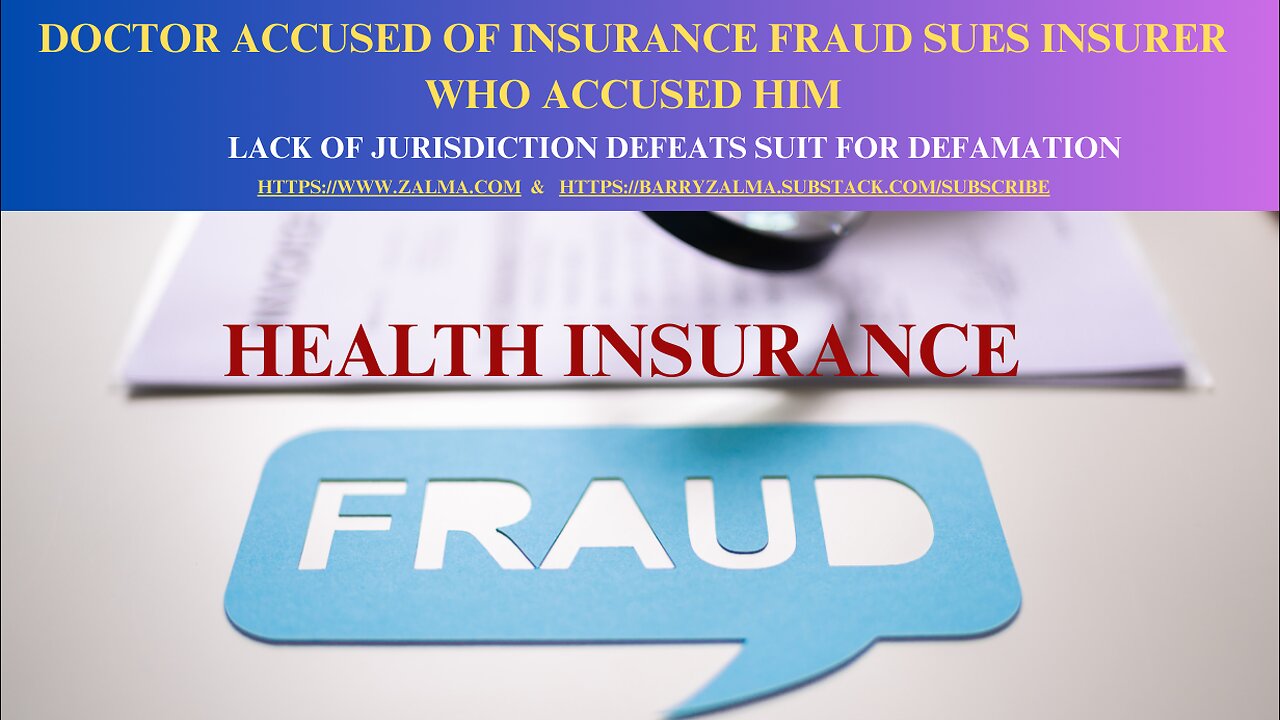
Courts Should Limit Punitive Damages
Barry Zalma
Feb 23, 2024
Read the full article at https://lnkd.in/g9Njunza, see the full video at https://lnkd.in/gYr_8GtK and at https://lnkd.in/gV2sWs8g and at https://zalma.com/blog plus more than 4700 posts.
Post 4741
The US Supreme Court has clearly stated that “[p]unitive damages may properly be imposed to further a State’s legitimate interests in punishing unlawful conduct and deterring its repetition.” [BMW of North America, Inc. v. Gore, 517 U. S. 559.] These damages often exceed the fines assessed by the state if the same person had acted criminally to damage the plaintiff.
The skills of plaintiff’s trial lawyers have convinced juries to award damages in sums that exceed the annual budget of Greece. The jury assesses the enormous damages because it becomes inflamed by the wrongful conduct of the defendant and agrees with the lawyer’s suggestion that the jury “teach the defendant a lesson” to stop it from doing the same to others. The argument has been successful in thousands of suits brought from Vermont to California and Florida to Washington.
For years punitive damage awards were unlimited. A $40 compensatory damage award resulted in a $5,000,000.00 punitive damages verdict. Some juries assessed billions of dollars in punitive damages with no constraint from the courts other than the wealth of the defendant.
In 2003 the US Supreme Court limited punitive damages in the United States when in State Farm Mutual Automobile Insurance Co. v. Campbell, 123 S.Ct. 1513, 538 U.S. 408, 155 L.Ed.2d 585 (U.S. 04/07/2003) by a 6-3 vote, overturned a $145 million verdict against an insurer. The Supreme Court concluded that a punitive damages award of $145 million, where full compensatory damages were $1 million, is excessive and violates the Due Process Clause of the Fourteenth Amendment.
Justice Kennedy, writing for the majority limited the ability of state and federal courts to award huge punitive damages awards and concluded that it was improbable that a punitive damage award more than a single digit multiplier of the compensatory damages award would seldom, if ever, pass the due process test. The Supreme Court, in BMW of North America, Inc. v. Gore, supra, set forth specific tests that must be met before punitive damages could fulfill the requirements of due process.
The State Farm Mutual Automobile Insurance Co. v. Campbell case arose out of an automobile accident where one party was killed and another severely injured. The Campbells, insured by State Farm attempted to pass six vehicles on a two-lane highway, failed, and caused the driver of an oncoming car to drive off the road to escape collision with the Campbells’ vehicle. The Campbells only had $25,000 coverage per person and $50,000 in the aggregate. The Campbells felt they were not at fault because there was no contact between the two vehicles. State Farm ignored the advice of its adjuster and counsel to accept policy limits demands and took the case to trial. The verdict at trial was more than $180,000 and the State Farm appointed counsel told the Campbells to put their house on the market since they would need the money to pay the verdict. State Farm refused to pay the judgment and to fund an appeal. The Campbells retained personal counsel to pursue an appeal that was not successful, entered into a settlement with the plaintiffs where the plaintiffs agreed to not execute on their judgment in exchange for an assignment of 90% of all money received in a bad faith action by the Campbells against State Farm. Before suit was filed, State Farm paid the full judgment.
At trial, the plaintiffs brought in evidence of actions of State Farm in first party cases across the country, in third party cases not similar to the Campbells’ auto accident and other evidence not related to the facts of their case.
The Supreme Court found that State Farm’s “handling of the claims against the Campbells merits no praise,” but concluded “a more modest punishment could have satisfied the State’s legitimate objectives “instead, this case was used as a platform to expose, and punish, the perceived deficiencies of State Farm’s operations throughout the country. However, a State cannot punish a defendant for conduct that may have been lawful where it occurred.”
State Farm Mutual Automobile Insurance Co. v. Campbell created a major, precedent changing, limitation on the right of a jury to assess punitive damages settling limits on total amounts that can be assessed and the types of wrongful conduct a jury can consider.
In determining the constitutional maximum for a particular punitive damage award under the due process clause, we are directed to follow three guideposts:
(1) the degree of reprehensibility of the defendant’s misconduct;
(2) the disparity between the actual or potential harm suffered by the plaintiff and the punitive damages award; and
(3) the difference between the punitive damages awarded by the jury and the civil penalties authorized or imposed in comparable cases.
The Ratio of Punitive Damages to Actual or Potential Harm
Punitive damages must bear a reasonable relationship to compensatory damages or to the plaintiff’s actual or potential harm. Courts must ensure that the measure of punishment is both reasonable and proportionate to the amount of harm to the plaintiff and to the general damages recovered.
Juries are often mislead that the poor victim of an insurer’s bad faith will be able to enjoy the compensation. After paying a contingency fee to counsel and state and federal income taxes the plaintiff recovers little or nothing of the punitive damages.
ZALMA OPINION
Although punitive damages serve a public purpose and deter wrongdoers from wrongful conduct the use of punitive damages in insurance bad faith cases has, in my opinion, done little to deter wrongdoing by insurance companies.
It is time to put a stake in the heart of the tort of bad faith. Insureds who are wronged by their insurer should limit their recovery to contract damages. They should be compelled to waive the tort and sue in assumsit. If the tort of bad faith must exist it must be applied equally. The abuse of the tort of bad faith has become so extreme that the tort must be eliminated or otherwise made fair.
Adapted from my book the Insurance Bad Faith and Punitive Damages Deskbook available at fastcase.com bookstore.
(c) 2024 Barry Zalma & ClaimSchool, Inc.
Please tell your friends and colleagues about this blog and the videos and let them subscribe to the blog and the videos.
Subscribe to my substack at https://barryzalma.substack.com/publish/post/107007808
Go to Newsbreak.com https://www.newsbreak.com/@c/1653419?s=01
Go to X @bzalma; Go to the podcast Zalma On Insurance at; Go to Barry Zalma videos at Rumble.com at https://rumble.com/c/c-262921; Go to Barry Zalma on YouTube- https://www.youtube.com/channel/UCysiZklEtxZsSF9DfC0Expg; Go to the Insurance Claims Library – http://zalma.com/blog/insurance-claims-library.
Please tell your friends and colleagues about this blog and the videos and let them subscribe to the blog and the videos.
Go to X @bzalma; Go to Newsbreak.com https://lnkd.in/g8azKc34; Subscribe to my substack at https://lnkd.in/gcZKhG6g
Go to the Insurance Claims Library – https://lnkd.in/gwEYkxD.
Please tell your friends and colleagues about this blog and the videos and let them subscribe to the blog and the videos.
Subscribe to my substack at https://lnkd.in/gcZKhG6g
Go to X @bzalma; Go to Newsbreak.com https://lnkd.in/g8azKc34; Subscribe to my substack at https://lnkd.in/gcZKhG6g,
Go to the Insurance Claims Library – https://lnkd.in/gwEYkxD.
Montana County Attorney Admits to Insurance Fraud & Is Only Suspended from Practice for 60 Days
Post 5251
Read the full article at https://lnkd.in/gnBaCjmv, see the video at https://lnkd.in/gfpVsyAd and at https://lnkd.in/gC73Nd8z, and at https://zalma.com/blog plus more than 5250 posts.
A Lawyer Who Commits Insurance Fraud and Pleas to a Lower Charge Only Suspended
In The Matter Of: Naomi R. Leisz, Attorney at Law, No. PR 25-0150, Supreme Court of Montana (December 23, 2025) the Montana Office of Disciplinary Counsel (ODC) filed a formal disciplinary complaint with the Commission on Practice (Commission) against Montana attorney Naomi R. Leisz.
On September 25, 2025, Leisz tendered a conditional admission and affidavit of consent. Leisz acknowledged the material facts of the complaint were true and she had violated the Montana Rules of Professional Conduct as alleged by ODC.
ADMISSIONS
Leisz admitted that in April 2022, her minor son was involved in a car accident in which he hit a power pole. Leisz’s son ...
Montana County Attorney Admits to Insurance Fraud & Is Only Suspended from Practice for 60 Days
Post 5251
Read the full article at https://lnkd.in/gnBaCjmv, see the video at https://lnkd.in/gfpVsyAd and at https://lnkd.in/gC73Nd8z, and at https://zalma.com/blog plus more than 5250 posts.
A Lawyer Who Commits Insurance Fraud and Pleas to a Lower Charge Only Suspended
In The Matter Of: Naomi R. Leisz, Attorney at Law, No. PR 25-0150, Supreme Court of Montana (December 23, 2025) the Montana Office of Disciplinary Counsel (ODC) filed a formal disciplinary complaint with the Commission on Practice (Commission) against Montana attorney Naomi R. Leisz.
On September 25, 2025, Leisz tendered a conditional admission and affidavit of consent. Leisz acknowledged the material facts of the complaint were true and she had violated the Montana Rules of Professional Conduct as alleged by ODC.
ADMISSIONS
Leisz admitted that in April 2022, her minor son was involved in a car accident in which he hit a power pole. Leisz’s son ...
Insurer’s Exclusion for Claims of Assault & Battery is Effective
Post 5250
Read the full article at https://lnkd.in/gBzt2vw9, see the video at https://lnkd.in/gEBBE-e6 and at https://lnkd.in/gk7EcVn9, and at https://zalma.com/blog plus more than 5250 posts.
Bar Fight With Security is an Excluded Assault & Battery
In The Cincinnati Specialty Underwriters Insurance Company v. Mainline Private Security, LLC, et al., Civil Action No. 24-3871, United States District Court, E.D. Pennsylvania (December 16, 2025) two violent attacks occurred in Philadelphia involving young men, Eric Pope (who died) and Rishabh Abhyankar (who suffered catastrophic injuries). Both incidents involved security guards provided by Mainline Private Security, LLC (“Mainline”) at local bars. The estates of the victims sued the attackers, the bars, and Mainline for negligence and assault/battery. The insurer exhausted a special limit and then denied defense or indemnity to Mainline Private Security.
INSURANCE COVERAGE
Mainline had purchased a commercial ...
Court Must Follow Judicial Precedent
Post 5252
Read the full article at https://www.linkedin.com/pulse/sudden-opposite-gradual-barry-zalma-esq-cfe-h7qmc, see the video at and at and at https://zalma.com/blog plus more than 5250 posts.
Insurance Policy Interpretation Requires Application of the Judicial Construction Doctrine
In Montrose Chemical Corporation Of California v. The Superior Court Of Los Angeles County, Canadian Universal Insurance Company, Inc., et al., B335073, Court of Appeal, 337 Cal.Rptr.3d 222 (9/30/2025) the Court of Appeal refused to allow extrinsic evidence to interpret the word “sudden” in qualified pollution exclusions (QPEs) as including gradual but unexpected pollution. The court held that, under controlling California appellate precedent, the term “sudden” in these standard-form exclusions unambiguously includes a temporal element (abruptness) and cannot reasonably be construed to mean ...


Lack of Jurisdiction Defeats Suit for Defamation
Post 5250
Posted on December 29, 2025 by Barry Zalma
See the video at and at
He Who Represents Himself in a Lawsuit has a Fool for a Client
In Pankaj Merchia v. United Healthcare Services, Inc., Civil Action No. 24-2700 (RC), United States District Court, District of Columbia (December 22, 2025)
FACTUAL BACKGROUND
Parties & Claims:
The plaintiff, Pankaj Merchia, is a physician, scientist, engineer, and entrepreneur, proceeding pro se. Merchia sued United Healthcare Services, Inc., a Minnesota-based medical insurance company, for defamation and related claims. The core allegation is that United Healthcare falsely accused Merchia of healthcare fraud, which led to his indictment and arrest in Massachusetts, causing reputational and business harm in the District of Columbia and nationwide.
Underlying Events:
The alleged defamation occurred when United ...


Zalma’s Insurance Fraud Letter
Read the full article at https://lnkd.in/dG829BF6; see the video at https://lnkd.in/dyCggZMZ and at https://lnkd.in/d6a9QdDd.
ZIFL Volume 29, Issue 24
Subscribe to the e-mail Version of ZIFL, it’s Free! https://visitor.r20.constantcontact.com/manage/optin?v=001Gb86hroKqEYVdo-PWnMUkcitKvwMc3HNWiyrn6jw8ERzpnmgU_oNjTrm1U1YGZ7_ay4AZ7_mCLQBKsXokYWFyD_Xo_zMFYUMovVTCgTAs7liC1eR4LsDBrk2zBNDMBPp7Bq0VeAA-SNvk6xgrgl8dNR0BjCMTm_gE7bAycDEHwRXFAoyVjSABkXPPaG2Jb3SEvkeZXRXPDs%3D
Zalma’s Insurance Fraud Letter (ZIFL) continues its 29th year of publication dedicated to those involved in reducing the effect of insurance fraud. ZIFL is published 24 times a year by ClaimSchool and is written by Barry Zalma. It is provided FREE to anyone who visits the site at http://zalma.com/zalmas-insurance-fraud-letter-2/
Zalma’s Insurance Fraud Letter
Merry Christmas & Happy Hannukah
Read the following Articles from the December 15, 2025 issue:
Read the full 19 page issue of ZIFL at ...













